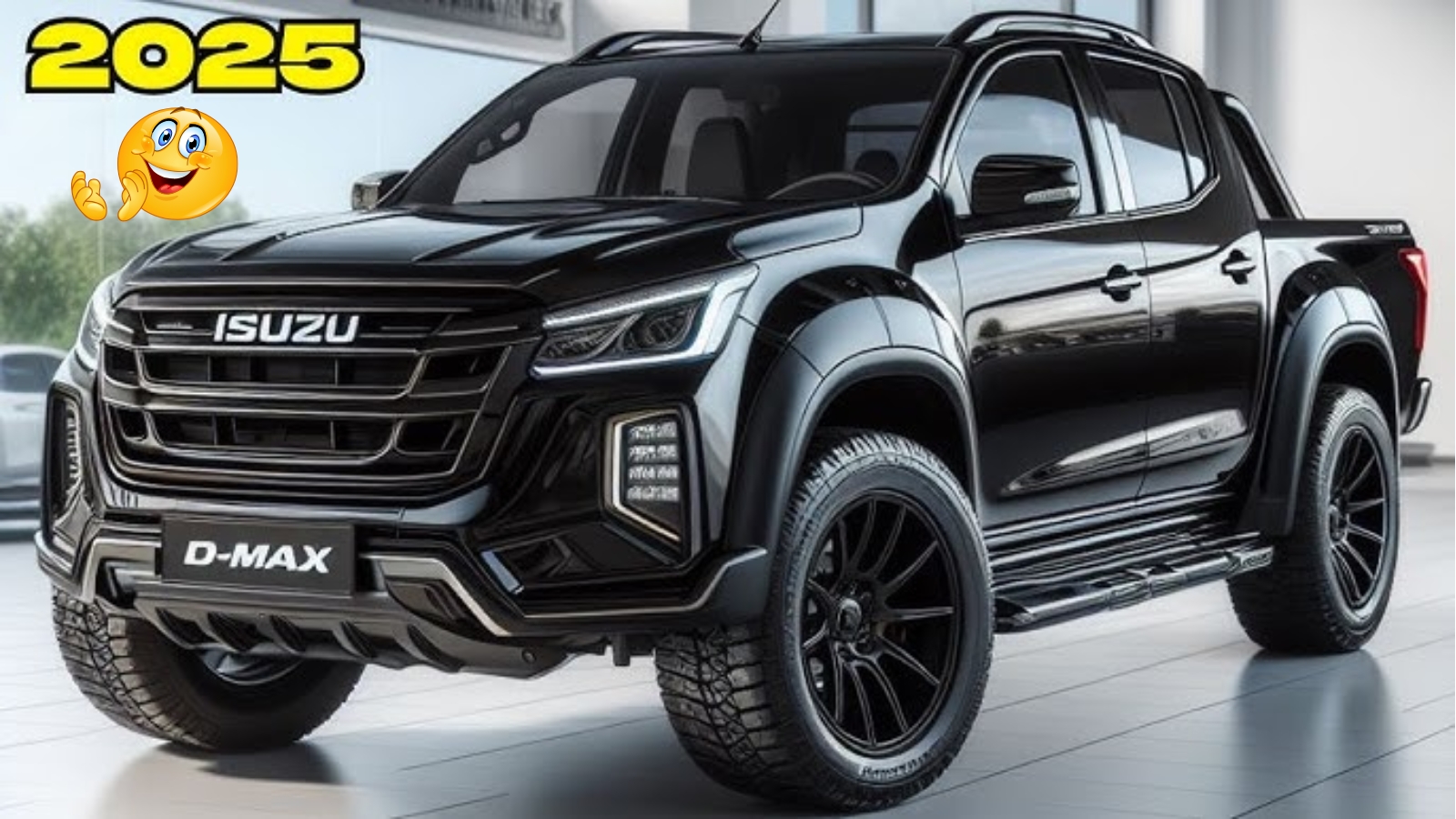The Isuzu D-Max electric ute is expected to cost significantly more than $100,000 when it arrives in Australia, based on recent UK pricing reveals. With 263km of driving range and the ability to tow 3500kg, it represents a major shift toward electrification in the Australian ute market.
The Australian ute market is about to witness something unprecedented. Isuzu has beaten a number of its direct rivals to the punch by revealing a fully electric version of its popular D-Max ute, positioning itself ahead of major competitors like the Toyota HiLux and Ford Ranger in the race to electrification.
What Makes the D-Max Electric Special
The D-MAX BEV retains a 3500kg towing capacity and one-tonne payload while featuring a dual-motor/4×4 powertrain. This isn’t just another compromise electric vehicle – it’s designed to maintain the capabilities that Australian ute buyers depend on.
The electric D-Max uses a pair of dual electric motors, with one unit on the front and rear axles respectively. The front motor produces 43kW and the rear develops 97kW, totalling 140kW combined. While this matches the power output of the current diesel engine, the EV only produces 325Nm of torque – down a significant 125Nm on the diesel version.
Performance That Matters to Real Users
For everyday users, the numbers translate to practical capability. Isuzu claims it can sprint from 0-100km/h in 10.1 seconds, and exceed 130km/h. While these figures might not set hearts racing, they’re adequate for the work and lifestyle demands most ute owners face.
The critical question many potential buyers will ask involves towing performance. Isuzu claims the D-Max EV has a payload capacity of 1000kg and a braked towing capacity of 3500kg, both of which are on par with the turbo-diesel. This means your boat, caravan, or work trailer requirements won’t change when switching to electric power.
Range Reality Check
A relatively small 66.9kWh battery pack means the D-Max EV has a claimed driving range of 263km on the WLTP cycle, crucially while it’s unladen. This range figure becomes more challenging when towing or carrying heavy loads, which is when most ute owners need their vehicles most.
Charging infrastructure considerations become crucial with this range limitation. The D-Max EV can be charged at up to 11kW with an AC charger and 50kW on a DC fast-charger, which Isuzu says can take it from 20 to 80 per cent charge in one hour.
Off-Road Capabilities
Traditional D-Max buyers value off-road performance, and the electric version maintains most of these abilities. However, there are some compromises. Ground clearance dropped to 210mm (down from 240mm) while wading depth is now 600mm (down from 800mm). These reductions are significant for serious off-road enthusiasts but remain adequate for most recreational and light commercial off-road use.
The Price Reality
Recent UK pricing reveals provide insight into Australian expectations. For the least expensive D-Max EV, prices start from £59,995 drive-away as a commercial vehicle (but excluding VAT) in extended-cab eDL40 guise – equivalent to $123,865 before taxes. With VAT, this rises to £71,994 ($148,640).
This represents a substantial premium over current diesel variants. The Isuzu D-Max is available from $32,700 to $78,900 for the 2025 range of diesel models, meaning the electric version could cost nearly double the price of top-specification diesel variants.
When Can Australians Expect It?
The D-Max BEV will launch in mainland Europe in 2025, followed by Australia, the United Kingdom, Thailand and other countries based on market needs and the maturity of EV charging infrastructure. While a spokesperson for Isuzu Ute Australia said the local subsidiary was unable to comment on specifics relating to future model plans, industry expectations point toward a 2026 Australian launch.
Competition Landscape
The surprise announcement and rapid timeline for the D-Max BEV’s introduction is a coup in many ways for Isuzu over automotive giants such as Toyota with its HiLux and Ford and the Ranger. Neither Toyota nor Ford have announced production-ready electric utes for the Australian market, giving Isuzu a significant first-mover advantage.
The electric ute market is heating up globally, with various manufacturers racing to develop viable alternatives to traditional diesel workhorses. Upcoming rivals such as the LDV eTerron 9 have been approved for Australia in both rear-wheel drive, 200kW guise and all-wheel drive 325kW trims, suggesting strong competition ahead.
D-Max Electric Specifications
| Specification | D-Max Electric |
|---|---|
| Power Output | 140kW combined (43kW front, 97kW rear) |
| Torque | 325Nm |
| Battery Capacity | 66.9kWh lithium-ion |
| Driving Range | 263km (WLTP, unladen) |
| Towing Capacity | 3500kg (braked) |
| Payload | 1000kg |
| 0-100km/h | 10.1 seconds |
| Top Speed | Over 130km/h |
| Ground Clearance | 210mm |
| Wading Depth | 600mm |
| Charging Speed | 11kW AC, 50kW DC |
| Expected Price Range | $120,000-$150,000+ |
Final Thoughts: The Isuzu D-Max electric represents a significant step toward sustainable transport in the traditionally diesel-dominated ute segment. While the premium pricing and range limitations may initially limit its appeal, it offers genuine capability for users ready to embrace electric mobility without sacrificing essential ute functionality.
Frequently Asked Questions
Q: When will the Isuzu D-Max electric be available in Australia?
A: Expected around 2026, following the European launch in 2025.
Q: Can the electric D-Max tow as much as the diesel version?
A: Yes, it maintains the same 3500kg towing capacity as diesel models.
Q: How much will the electric D-Max cost in Australia?
A: Based on UK pricing, expect over $120,000, potentially reaching $150,000.
